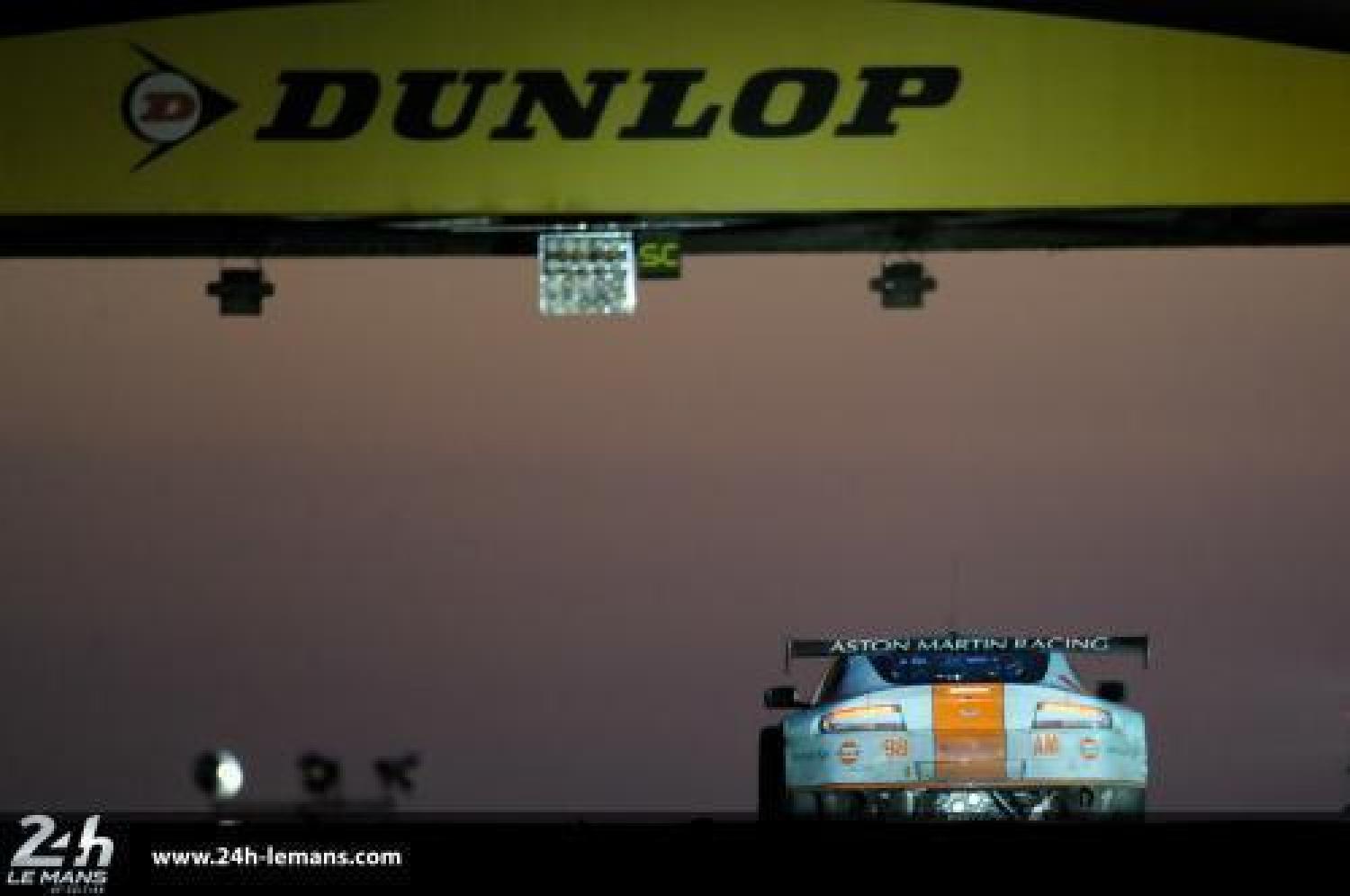-ASTON-MARTIN-VANTAGE-V8-ACA-1424H--D315712_l.jpg)
Photo : Arnaud CORNILLEAU / ACO
The Dunlop Curve
The famous Dunlop Bridge, which straddles the curve of the same name, is synonymous with the 24 Hours of Le Mans. During the 82-year-history of the 24 Hours of Le Mans, the Dunlop Curve has been significantly modified several times, but still offers an impressive panoramic view to spectators.
It is undoubtedly one of the areas of the circuit that has undergone the most changes, especially since the Dunlop Curve is a part of the Bugatti circuit which turned 50 this year, and because it is used both by cars and motos. But, it took awhile for modifications to take shape since it wasn't until 1955 that the radius of the curve was changed for the first time.
Though in 1978 the Dunlop Bridge was enlarged so as to allow for removals, the curve remained intact until 1987 with the creation of an S-shaped chicance in the long portion of the curve at the request of the Fédération Internationale Moto in view of the Grand Prix of France. The addition reduced speeds by...100 km/h! Before this chicane, the rear axles of the fastest cars had a nasty habit of taking flight...Nonetheless, it was not enough, and 10 years later the area was once again under construction so as to slow cars and motos down and to create a larger removal zone. This was repeated in 2006 with the narrowing of the Dunlop Curve's radius to slow motos down further.
Following all these evolutions, one should actually speak of the Dunlop Curves, plural, since the curve itself is followed by a chicane of the same name. The Dunlop Chicane is highly coveted by spectators despited protective fencing.
In 1980, Jean Rondeau, mid-battle at the wheel of the car he designed with Reinhold Joest - who created his outfit a few years later - and his Porsche, almost lost it in the rain-soaked Dunlop Curve. The French driver went end over end and touched the rail, imitated a few minutes later by the German driver who barely managed to miss Rondeau stuck on the track. Finally, Rondeau ended up winning the 24 Hours of Le Mans in a car sporting his name, a unique feat in the history of the race...
Near the Village, the Dunlop Curve is easily accessible. Three grandstands situated on the other side of the track from the Village allow spectators to follow the race live and on two giant screens, and several restaurants faciliate a panoramic view of the area.
For photography enthusiasts, two solutions: the inside or outside of the curve. From the inside, one can clearly follow the cars as they take on the curve at high speeds then navigate the chicane, and admire the drivers' dexterity. Then one simply needs to use the Dunlop Bridge to reach the grandstands and the outside of the track.
If you do not have a seat in the grandstands, you can still get a spot at the bottom of the Dunlop grandstand, situated at the end of the chicane of the same name, right where drivers begin to re-accelerate. Caution to those who hit the accelerator too hard and too fast: it happens quite a lot!
To be continued...
Cécile Bonardel / ACO - Translation by Nikki Ehrhardt / ACO
PHOTO: LE MANS (SARTHE, FRANCE), CIRCUIT DES 24 HEURES, 24 HOURS OF LE MANS, SUNDAY JUNE 15 2014, RACE. An Aston Martin takes the Dunlop Curve on a magical night at Le Mans.

-ASTON-MARTIN-VANTAGE-V8-ACA-1424H--D315712_l.jpg)
